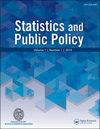Examining the Carnegie Classification Methodology for Research Universities
IF 1.5
Q2 SOCIAL SCIENCES, MATHEMATICAL METHODS
引用次数: 16
Abstract
ABSTRACT University ranking is a popular yet controversial endeavor. Most rankings are based on both public data, such as student test scores and retention rates, and proprietary data, such as school reputation as perceived by high school counselors and academic peers. The weights applied to these characteristics to compute the rankings are often determined in a subjective fashion. Of significant importance in the academic field, the Carnegie Classification was developed by the Carnegie Foundation for the Advancement of Teaching. It has been updated approximately every 5 years since 1973, most recently in February 2016. Based on bivariate scores, Carnegie assigns one of three classes (R1/R2/R3) to doctorate-granting universities according to their level of research activity. The Carnegie methodology uses only publicly available data and determines weights via principal component analysis. In this article, we review Carnegie’s stated goals and the extent to which their methodology achieves those goals. In particular, we examine Carnegie’s separation of aggregate and per capita (per tenured/tenure-track faculty member) variables and its use of two separate principal component analyses on each; the resulting bivariate scores are very highly correlated. We propose and evaluate two alternatives and provide a graphical tool for evaluating and comparing the three scenarios.研究型大学的卡内基分类方法研究
大学排名是一项很受欢迎但也有争议的工作。大多数排名既基于公共数据,如学生考试成绩和留校率,也基于专有数据,如高中辅导员和学术同行所认为的学校声誉。应用于这些特征以计算排名的权重通常是以主观方式确定的。卡内基分类法是由卡内基教学促进基金会制定的,在学术领域具有重要意义。自1973年以来,它大约每5年更新一次,最近一次是在2016年2月。基于双变量分数,卡内基根据研究活动水平将三个类别(R1/R2/R3)中的一个分配给授予博士学位的大学。卡内基的方法只使用公开可用的数据,并通过主成分分析确定权重。在这篇文章中,我们回顾了卡内基的既定目标,以及他们的方法在多大程度上实现了这些目标。特别地,我们研究了卡内基对总变量和人均变量(每个终身教职/终身教职教职员工)的分离,以及对每个变量使用两个单独的主成分分析;所得的双变量分数是高度相关的。我们提出并评估了两种方案,并提供了一个图形工具来评估和比较这三种方案。
本文章由计算机程序翻译,如有差异,请以英文原文为准。
求助全文
约1分钟内获得全文
求助全文
来源期刊

Statistics and Public Policy
SOCIAL SCIENCES, MATHEMATICAL METHODS-
CiteScore
3.20
自引率
6.20%
发文量
13
审稿时长
32 weeks
 求助内容:
求助内容: 应助结果提醒方式:
应助结果提醒方式:


